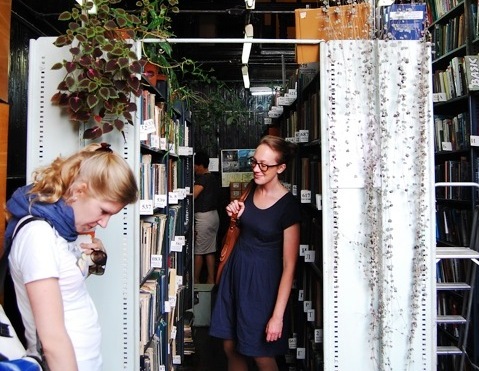- November 16, 2021
Christianna noted that Russia challenged her to ‘reset’. A foreign language and a new city, with its own cadences, curiosities, and idiosyncrasies demanded her to rework the way she moves, interacts, and functions on a daily basis.
Houses of Culture
The research of Bonin, a second year PhD student in History, Theory and Criticism of Architecture + Art, considered how culture has been defined and modified by different institutions and expert-driven planning organizations. While the student visited nearly thirty Houses of Culture in Moscow, St. Petersburg, Kazan, Nizhny Novgorod, and Sergiyev Posad, she used the ZIL Cultural Center example to highlight the historical, economic, and political complexity that Houses of Culture offer us.
The ZIL Palace of Culture, Moscow’s largest Soviet House of Culture, was designed by the Vesnin Brothers, leading Constructivist architects, between 1930 and 1937 in what were then the fringes of the city. It was built over the necropolis of the Simonov monastery, which was dismantled in the name of Lenin and communist revolution by the ZIL automobile plant workers who would soon fill its theater, dance hall, and library.
ZIL Cultural Center
Today, the ZIL automobile plant struggles with a mere 10 percent of its previous employees. Until two years ago, few visitors entered the quiet halls of the House of Culture. Now, the rebranded “ZIL Cultural Center” hosts a pilot project led by the Russian Ministry of Culture. The project’s leaders strive to do no less than question and rethink the role of the ‘House of Culture’ in the future cultural landscape. They aim to develop a series of practical and conceptual proposals that may be used to modernize several former Soviet Houses of Culture in Moscow, raising anew the question of how “culture” can be integrated with modernization processes.
After MISTI
Christianna aims to use some of her summer research for a seminar or a conference paper in the coming academic year. Also, the student plans to use some of her research to form the basis of a dissertation proposal in year three of her PhD program.
